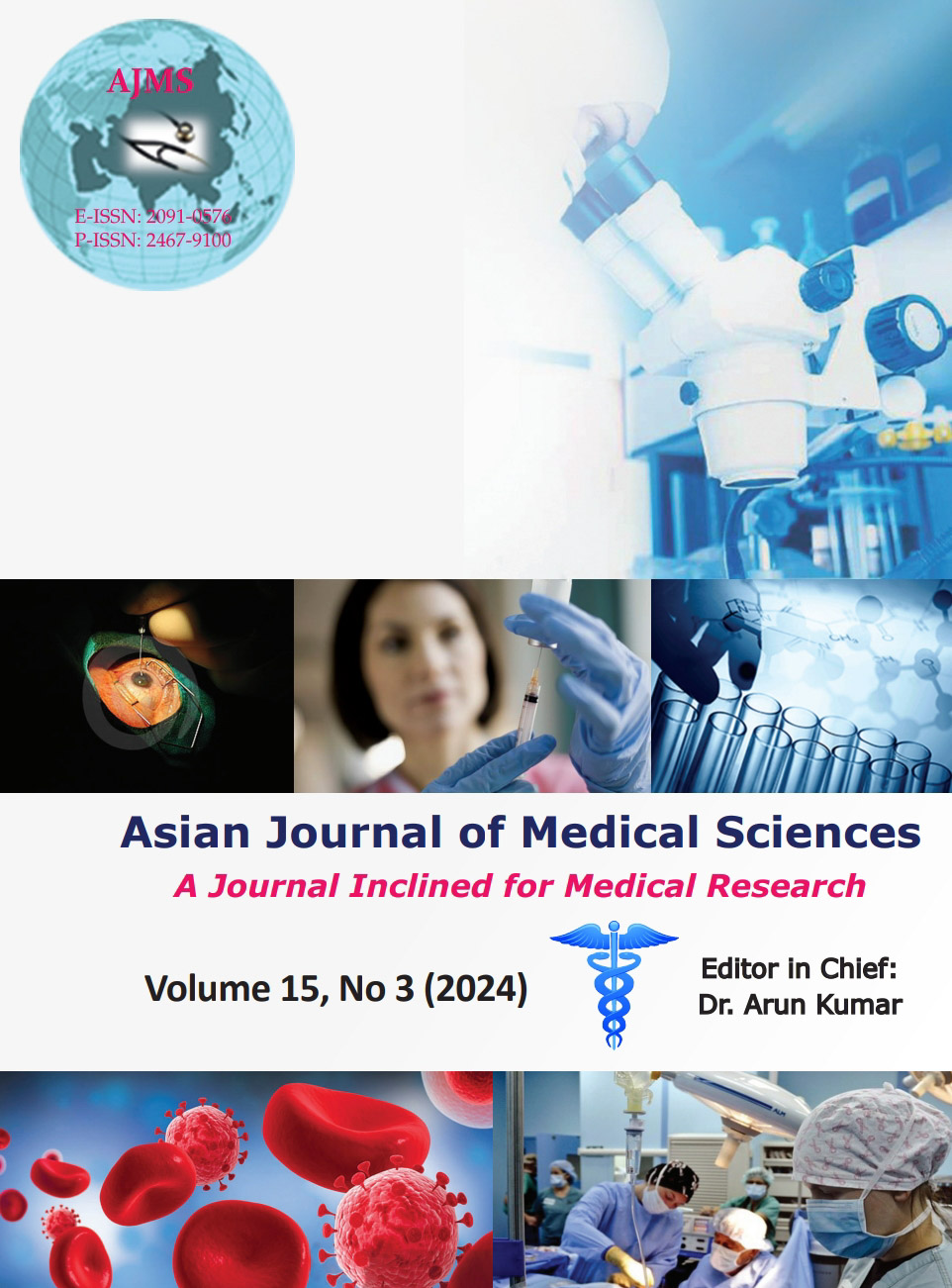Ileal perforation-etiopathology and outcome – An observational study
Keywords:
Enteric perforations; Tubercular perforations; Ileal perforative peritonitis; IleostomyAbstract
Background: Ileal perforations have a diverse etiology and often present with perforative peritonitis in the surgical emergency. This study is based on the scenario of management of ileal perforation encountered in a tertiary teaching hospital in West Bengal.
Aims and Objectives: The aim and objective of this study is to document and evaluate the post-operative outcome based on the diverse etiopathology, clinical presentation, and surgical management performed in patients having ileal perforation.
Materials and Methods: A prospective cross-sectional observational study was conducted in the Deben Mahata Government Medical College, Purulia, West Bengal, for a period of 2 years from February 2020 to January 2022 with 60 patients introperatively diagnosed with ileal perforation. Emergency exploratory laparotomy was done in all the cases presenting with perforative peritonitis. Ileal perforation was identified and an edge biopsy was taken. Appropriate surgical treatment in the forms of primary repair/resection-anastomosis/resection-ileostomy was done. The histopathological report was reviewed following surgery. The patients were evaluated in the post-operative period for post-operative morbidity and mortality.
Results: Typhoid fever (68.33%) was the predominant cause in our study. The most common symptoms were abdominal pain (93%), fever (85%), and abdominal distension (75%). Widal test was performed preoperatively and was positive in 41 cases (68.33%). In our study, primary repair (58.33%), resection-anastomosis (15%), and resection-ileostomy (26.67%) were the main surgical treatment performed. Sepsis, surgical site infections (SSIs), fecal fistula, and wound dehiscence were the common post-operative complications found. Among them, SSI (51.67%) was the most common post-operative complication (P<0.0001) found and fecal fistula was the most dreaded post-operative complication with 50% mortality. Histopathological reports following surgery showed cases were mainly due to enteric fever (51.67%) and tuberculosis (25%).
Conclusion: Early surgical intervention was the mainstay of treatment of ileal perforation. Delayed presentation of perforation is responsible for the development of surgical site infections (SSIs). Uncontrolled generalized sepsis, wound dehiscence, and fecal fistula were the main causes of post-operative mortality.
Downloads
Downloads
Published
How to Cite
Issue
Section
License
Copyright (c) 2023 Asian Journal of Medical Sciences

This work is licensed under a Creative Commons Attribution-NonCommercial 4.0 International License.
Authors who publish with this journal agree to the following terms:
- The journal holds copyright and publishes the work under a Creative Commons CC-BY-NC license that permits use, distribution and reprduction in any medium, provided the original work is properly cited and is not used for commercial purposes. The journal should be recognised as the original publisher of this work.
- Authors are able to enter into separate, additional contractual arrangements for the non-exclusive distribution of the journal's published version of the work (e.g., post it to an institutional repository or publish it in a book), with an acknowledgement of its initial publication in this journal.
- Authors are permitted and encouraged to post their work online (e.g., in institutional repositories or on their website) prior to and during the submission process, as it can lead to productive exchanges, as well as earlier and greater citation of published work (See The Effect of Open Access).




